Burkart Keramik
Swiss Mid-Century Vase – Rectangular “Swiss Farmhouse” Handarbeit – Burkart Keramik
Swiss Mid-Century Vase – Rectangular “Swiss Farmhouse” Handarbeit – Burkart Keramik
Couldn't load pickup availability
Celebrate Swiss folk charm with this Burkart mid-century vase, a rectangular form decorated on all sides with a stylized Swiss farmhouse - featuring timbered walls, mullioned windows, and flowering window boxes. The glossy brown ground sets off hand-applied whites, greens, and soft florals; the relief lines give the façade real depth.
Signed “Burkart Handarbeit” to the base and bearing the “Burkart Kunstkeramik” label, the piece reflects the company’s long tradition of craft ceramics in Kreuzlingen (Thurgau). Founded in 1865 by stove-maker Stephan Burkart, the Burkart workshop evolved from stove tiles to decorative art pottery and remained active into the late 20th century.
Perfect as a statement bud vase, a utensil or brush holder, or simply as a cheerful architectural accent on a shelf. A lovely Swiss collectible that pairs beautifully with other mid-century ceramics and folk-art pieces.
- Material: Glazed ceramic, hand-decorated (Handarbeit)
- Maker: Burkart (Burkart kunst keramik), Kreuzlingen, Switzerland
- Motif: Swiss farmhouse with timbering & window-box flowers
- Style: Mid-Century Modern
- Place of Origin: Switzerland
- Mark: Paper label; inscribed “Burkart Handarbeit” to base
- Date of Manufacture: 1960s
- Condition: Perfect condition
Dimension:
Height: 18 cm | 7 in
Width: 11 cm | 4.3 in
Depth: 8 cm | 3.1 in
Weight: 0.4 kg
Share
- Worldwide Shipping
- Secure Packaging
- Loving Curation
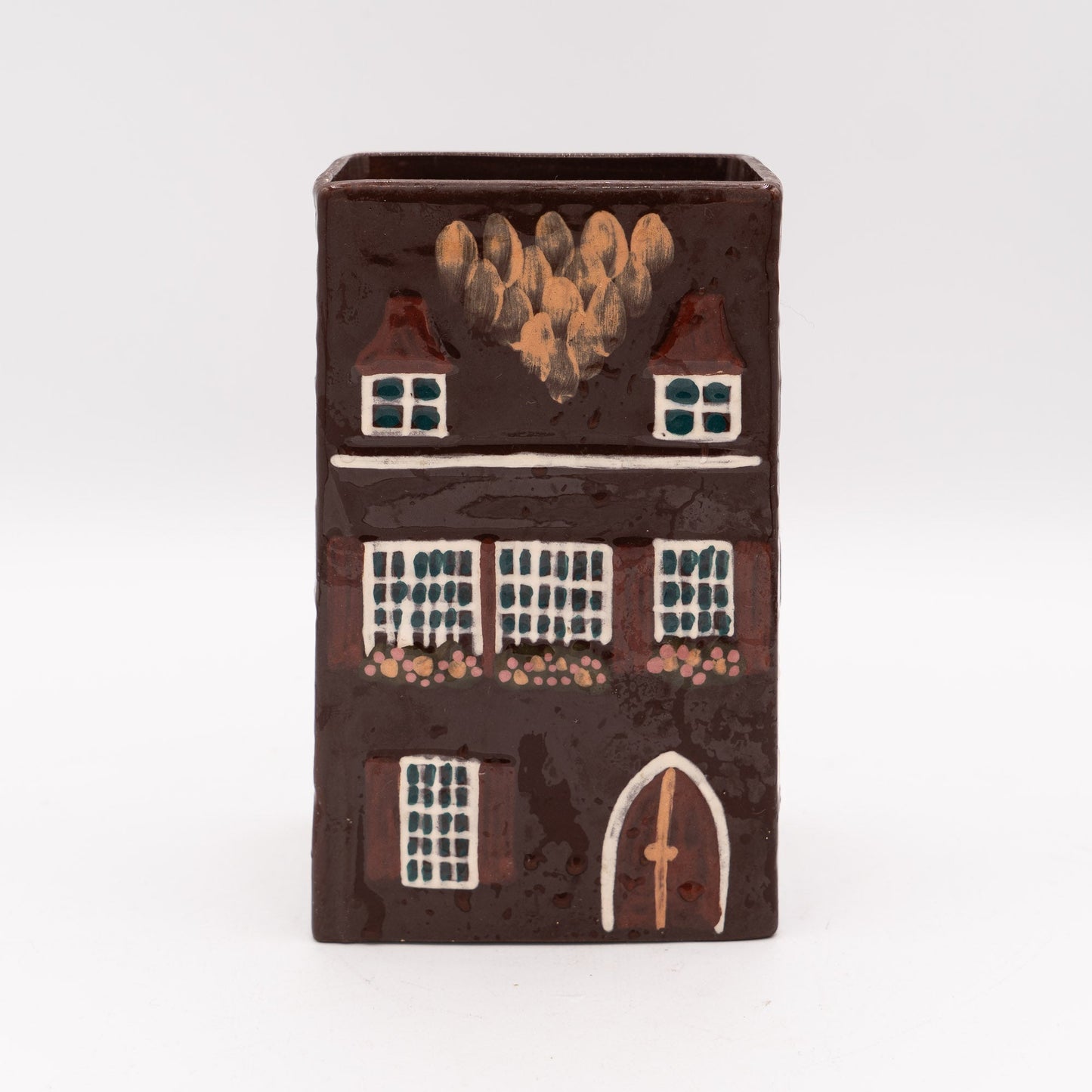
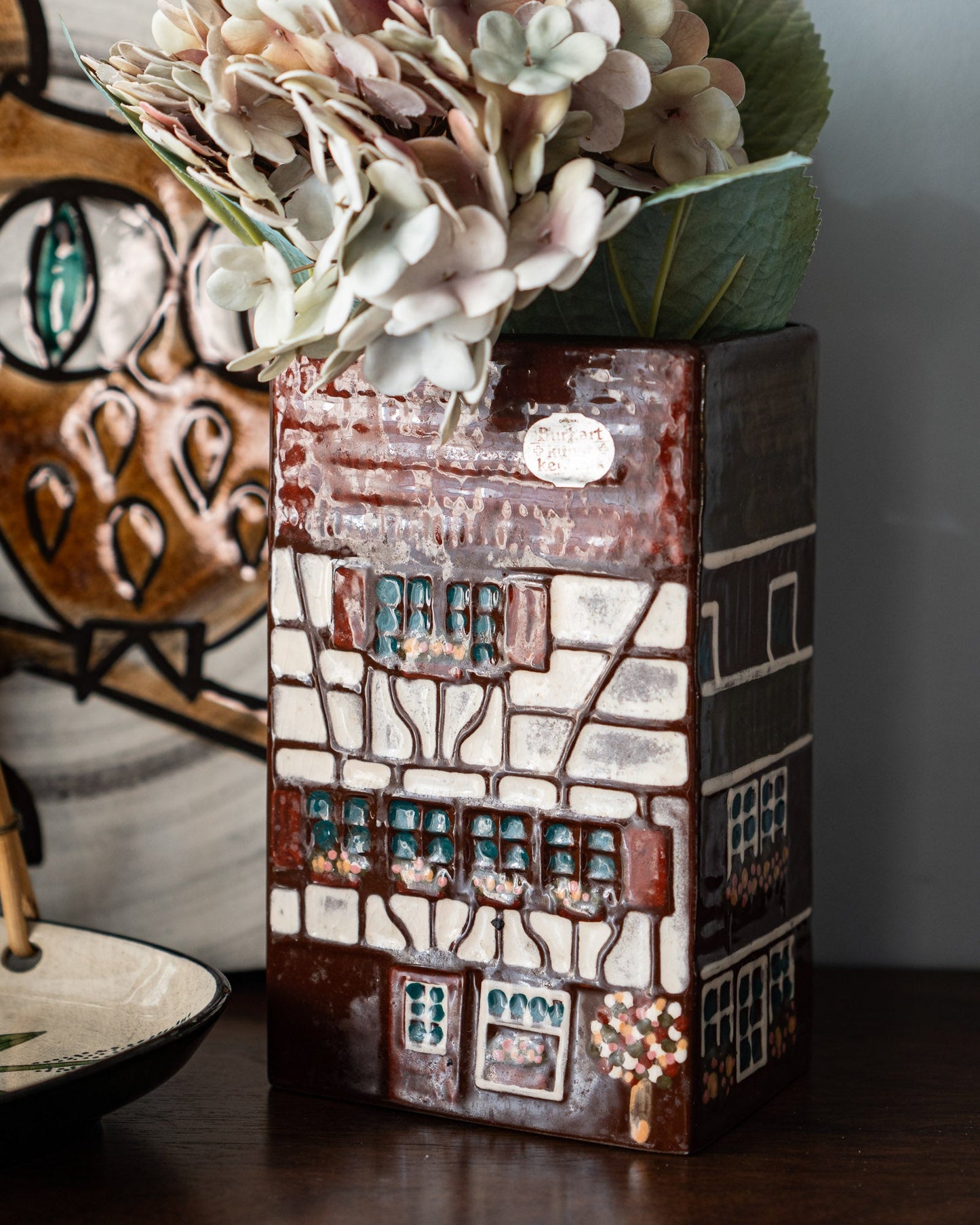
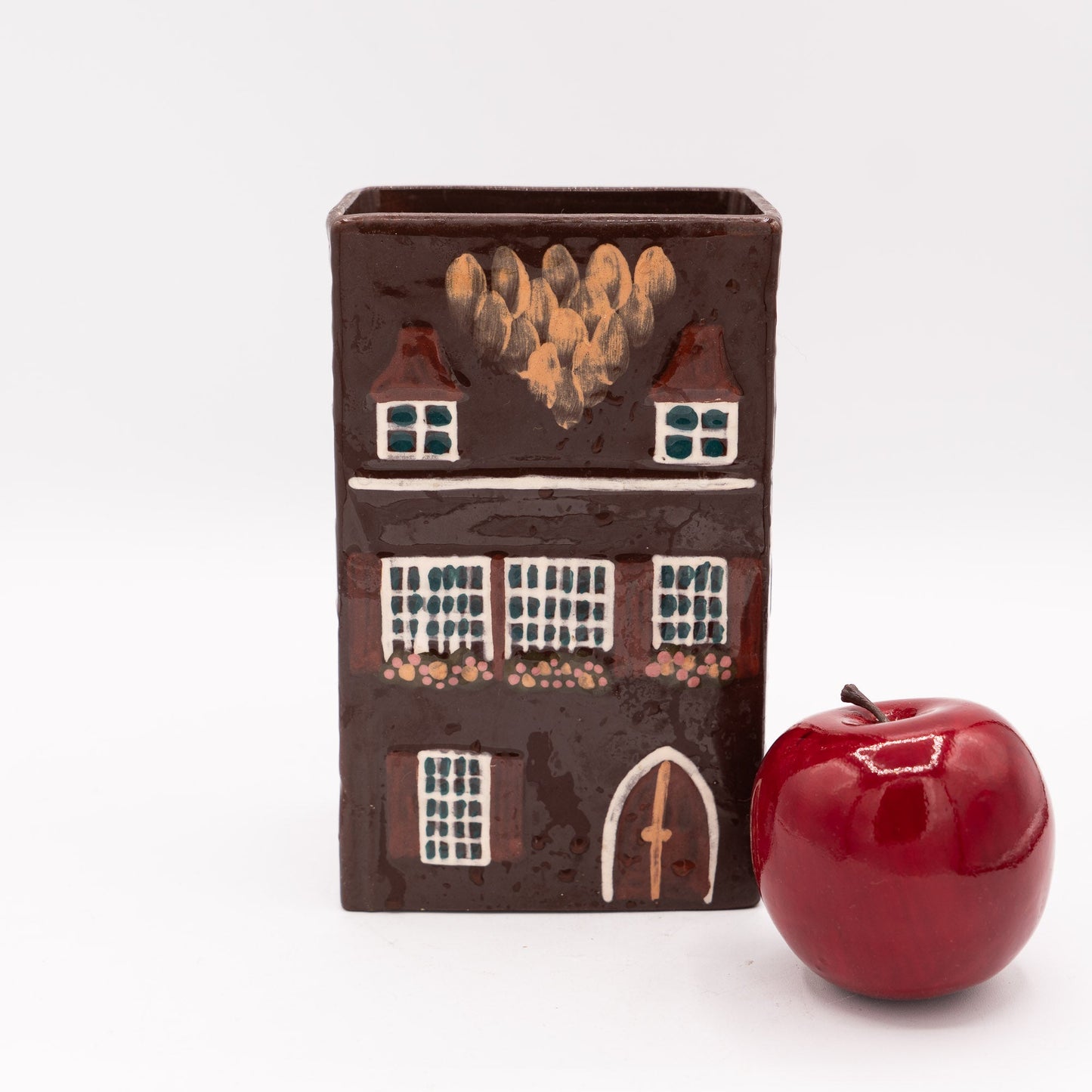
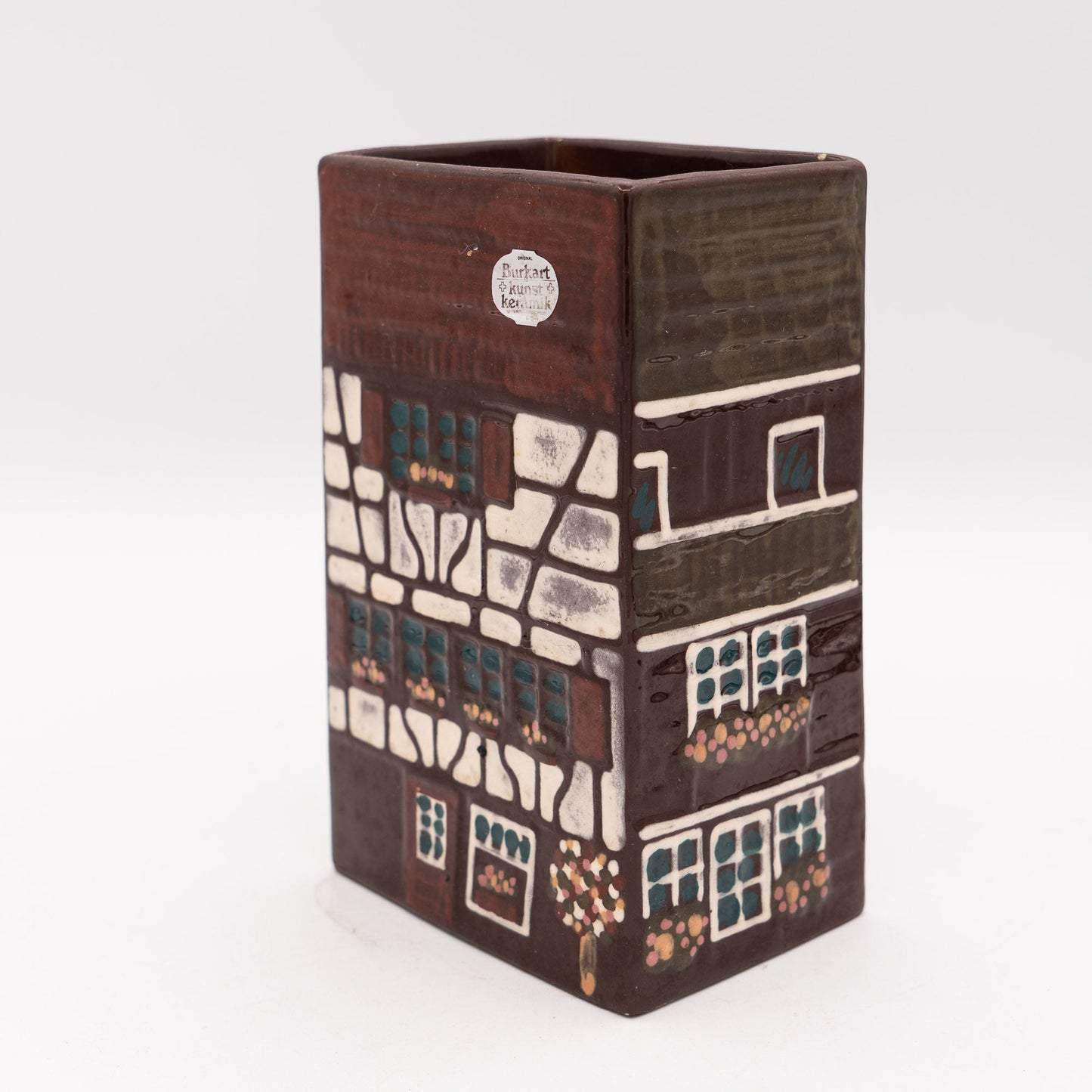
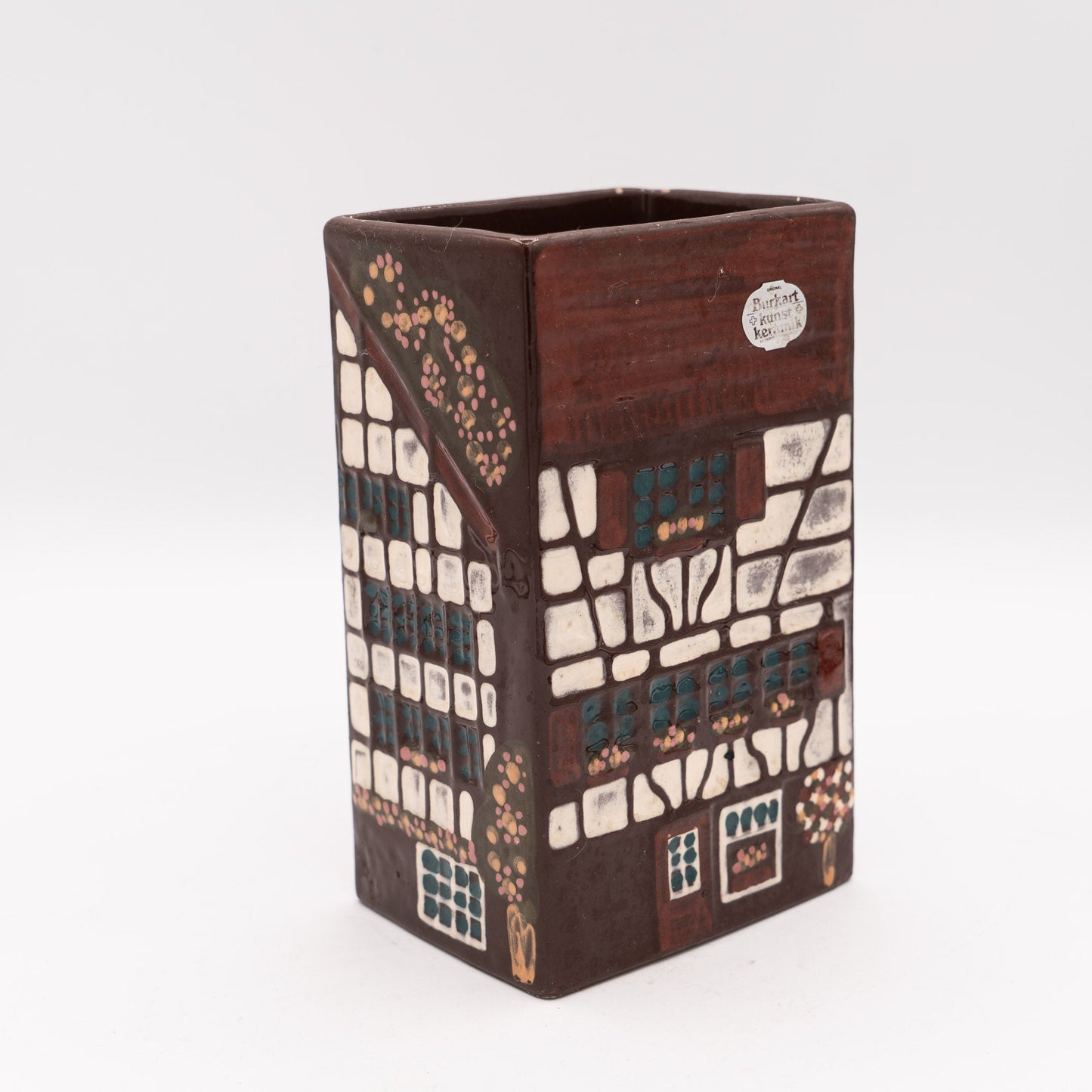
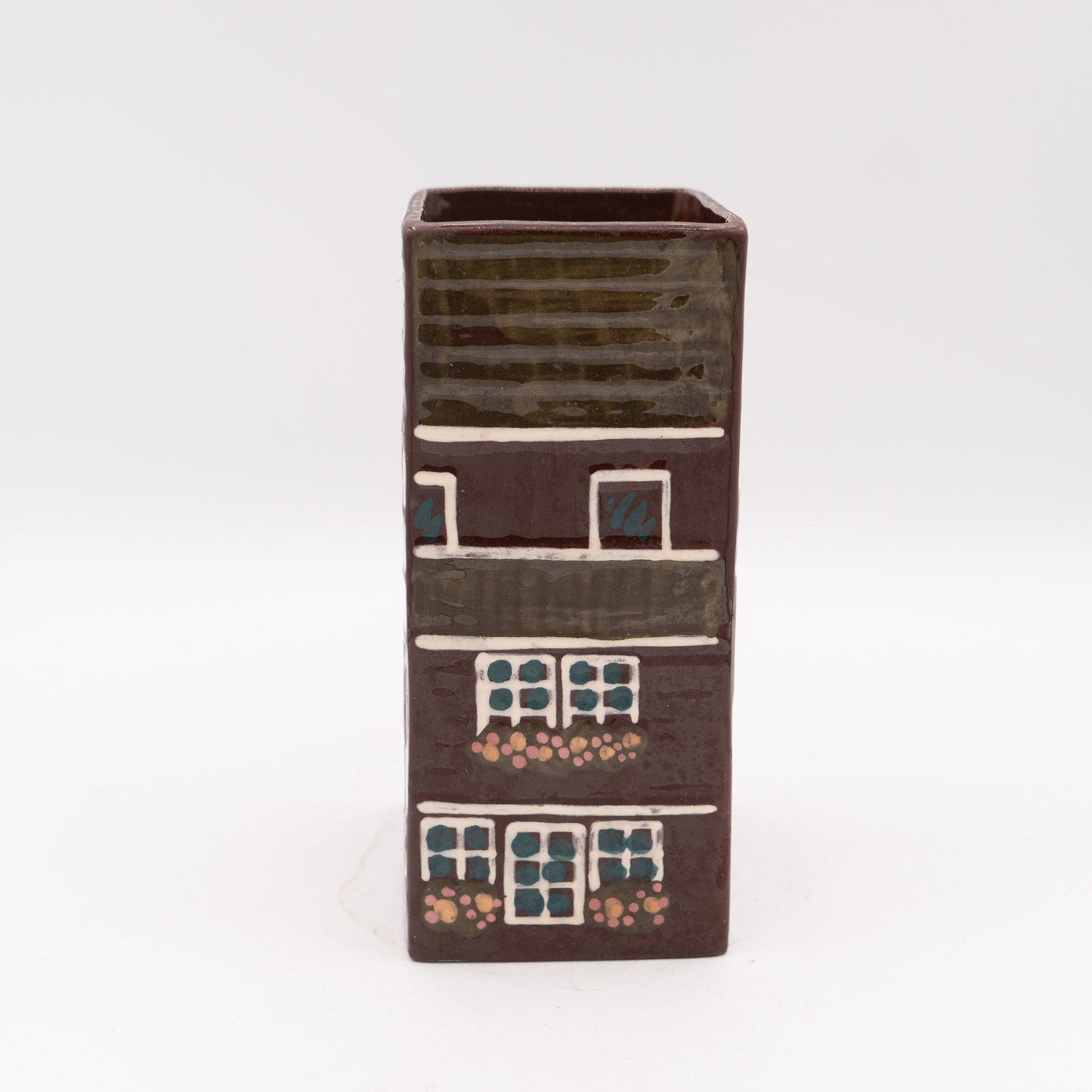
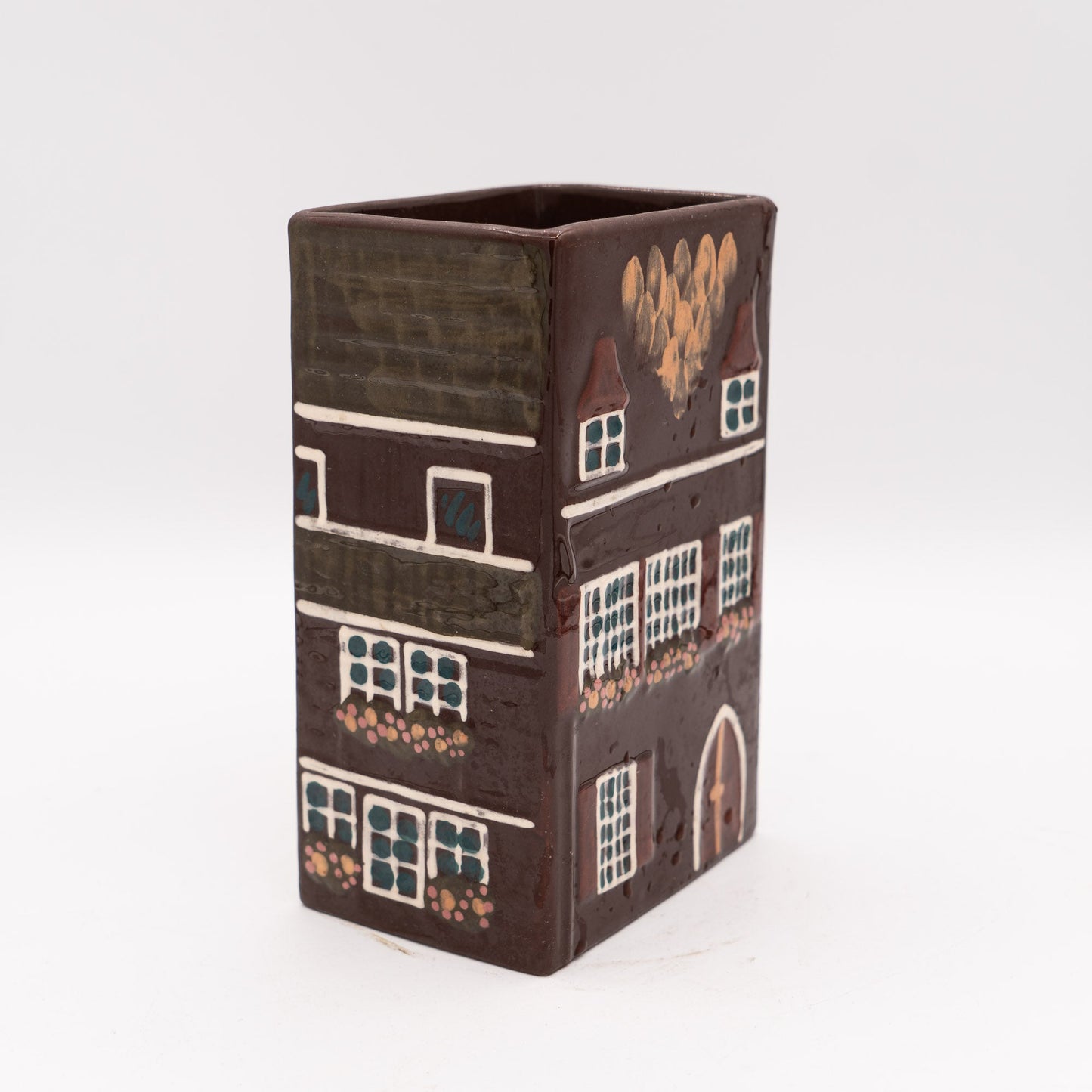
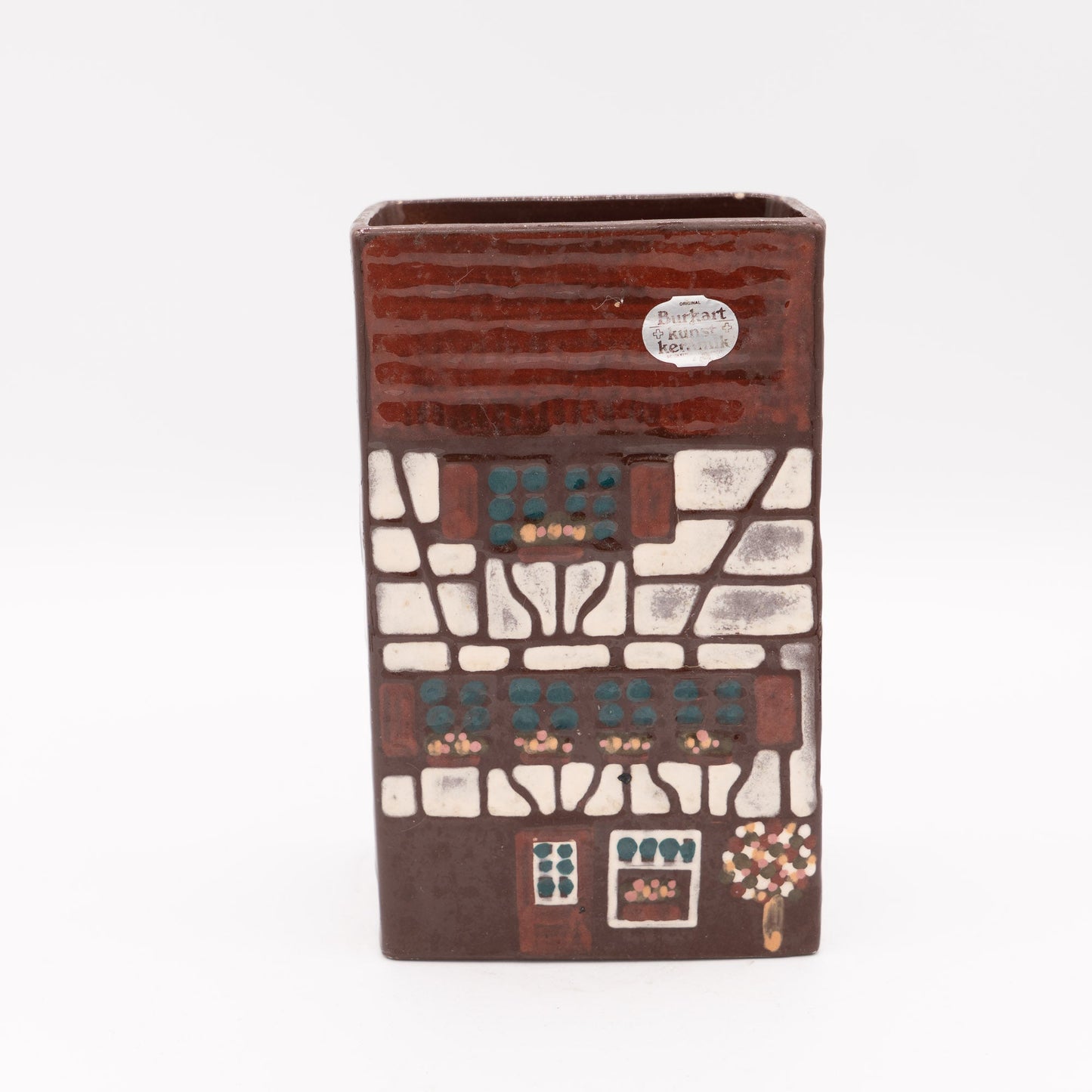
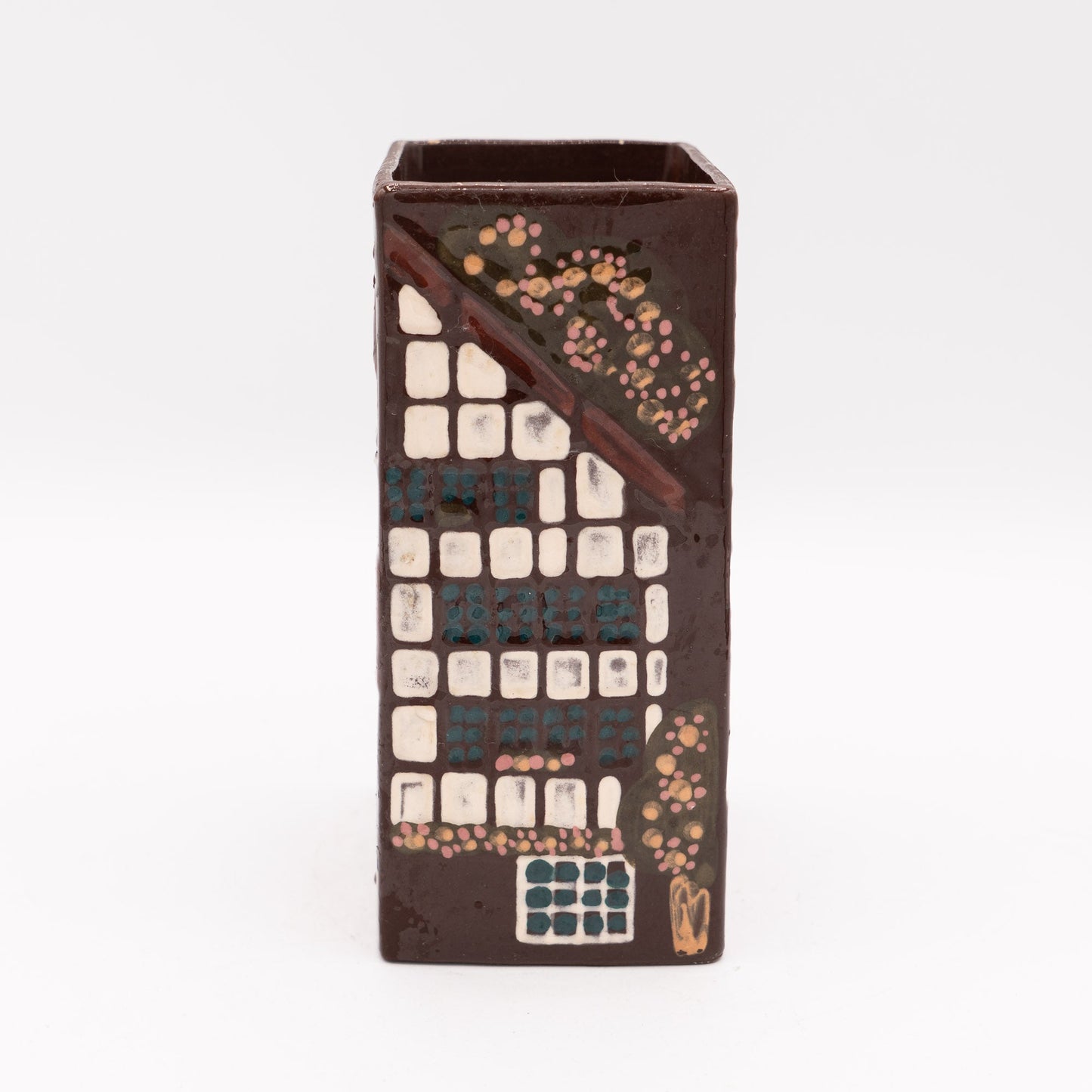
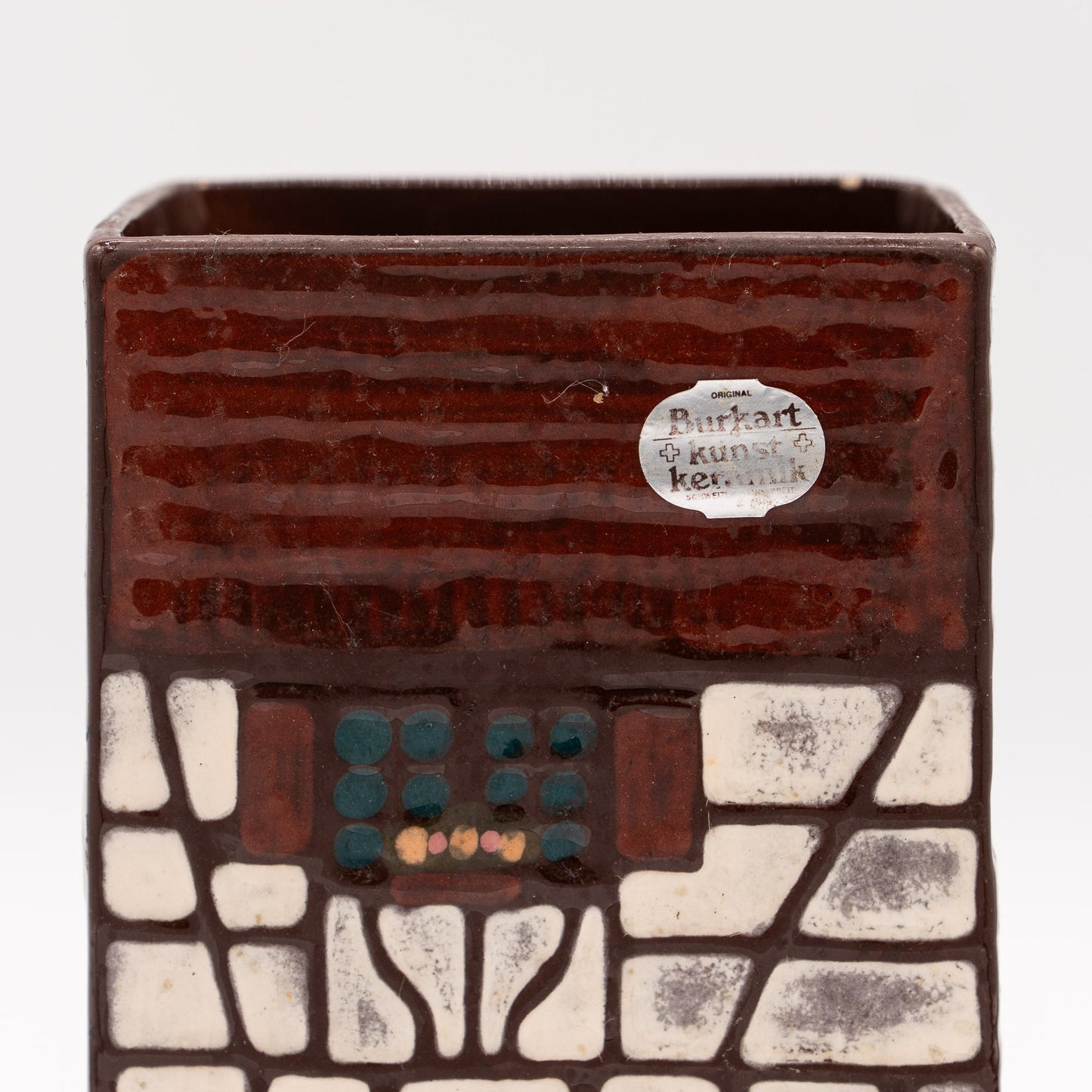
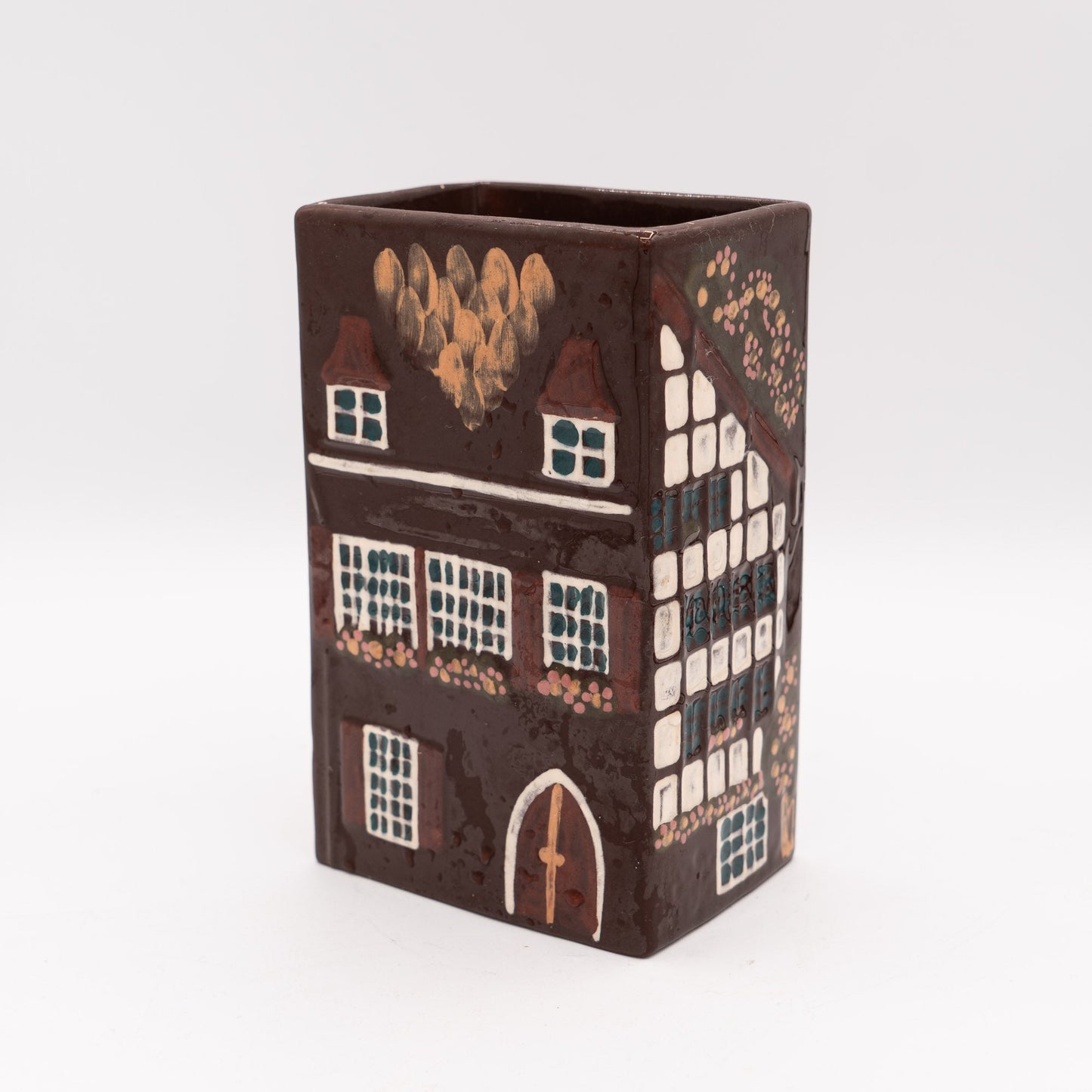
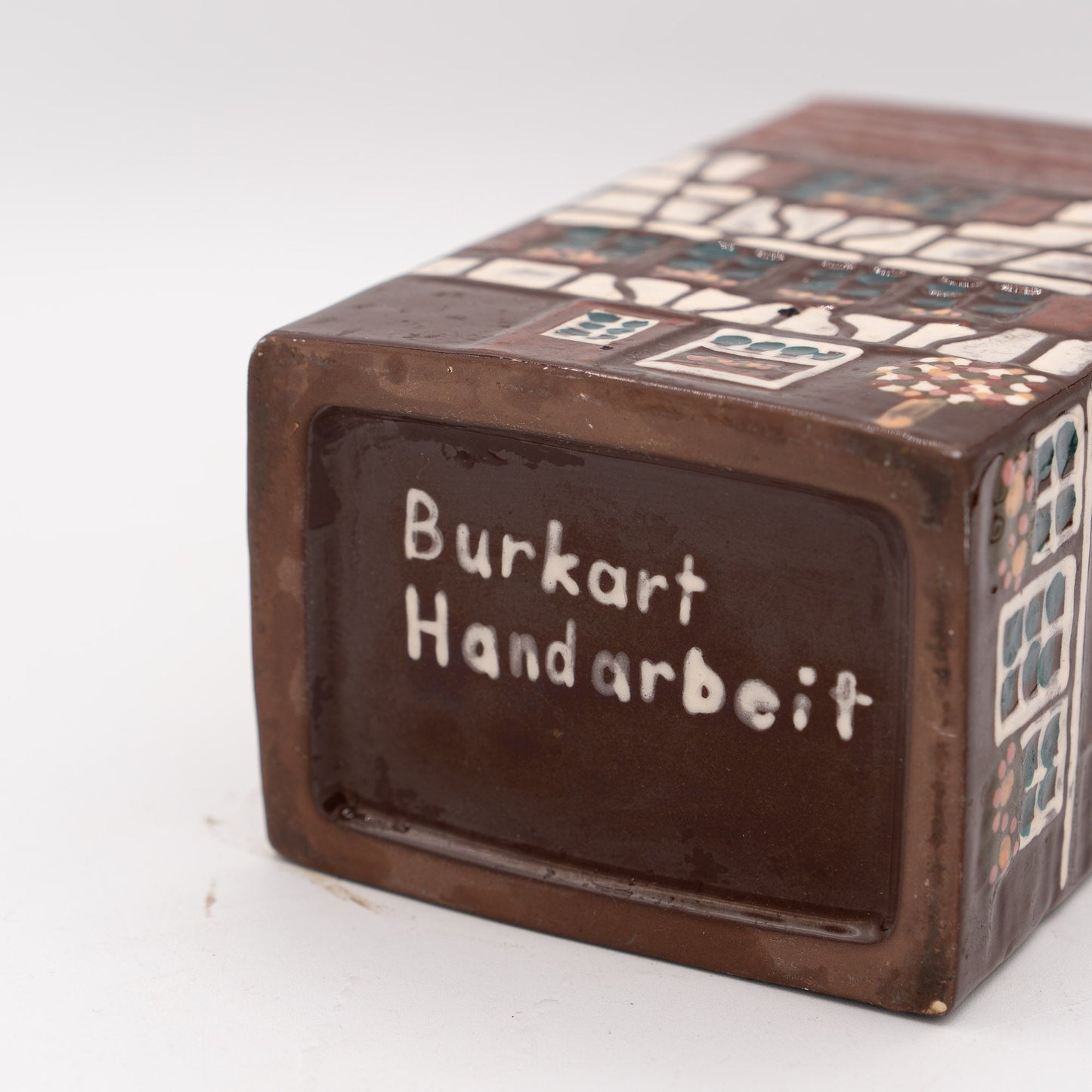
Origin & Maker
Founded in 1865 in Kreuzlingen (Thurgau), Burkart began as a stove-making and tile workshop under Stephan Burkart. From architectural ceramics the firm gradually expanded into decorative wares, keeping a strong “Handarbeit” ethos that prized hand-applied glazes and relief decoration.
By the mid-20th century, Burkart’s ceramic line blended Swiss folk imagery with modern practicality: village facades, floral window boxes, and geometric borders appeared on vases, bowls, and plaques. The workshop’s pieces were typically labelled “Burkart kunst keramik” and often inscribed “Handarbeit”, signalling small-batch craftsmanship rather than mass production.
During the post-war design upswing, Burkart embraced clean forms and durable glazes while retaining a warm, homespun character. The result is a uniquely Swiss balance: objects with everyday usefulness, decorated with motifs that echo regional architecture and alpine life. Today, Burkart ceramics are valued for their honest materials, tactile glazes, and unmistakable sense of place.
Blog posts
View all-

A Serendipitous Morning at the Rue de Bretagne ...
There are few joys in life that match the thrill of stumbling upon a hidden treasure, and for me, flea markets hold that magical allure. One of my favourite flea...
A Serendipitous Morning at the Rue de Bretagne ...
There are few joys in life that match the thrill of stumbling upon a hidden treasure, and for me, flea markets hold that magical allure. One of my favourite flea...
-

Emile Bourgeois and "Le Grand Dépôt" in Paris
Recently, I found this stunning Sarreguemines wash set. It was at the Brocante in Belfort, France. On this day, we had got up at 4 AM to be there in...
Emile Bourgeois and "Le Grand Dépôt" in Paris
Recently, I found this stunning Sarreguemines wash set. It was at the Brocante in Belfort, France. On this day, we had got up at 4 AM to be there in...
-

The Legacy of Robert Haviland: A Journey from N...
The story of Robert Haviland porcelain is one of artistry, transatlantic ambition, and enduring heritage. It begins in the mid-19th century when David Haviland, an enterprising New Yorker, founded Haviland...
The Legacy of Robert Haviland: A Journey from N...
The story of Robert Haviland porcelain is one of artistry, transatlantic ambition, and enduring heritage. It begins in the mid-19th century when David Haviland, an enterprising New Yorker, founded Haviland...















